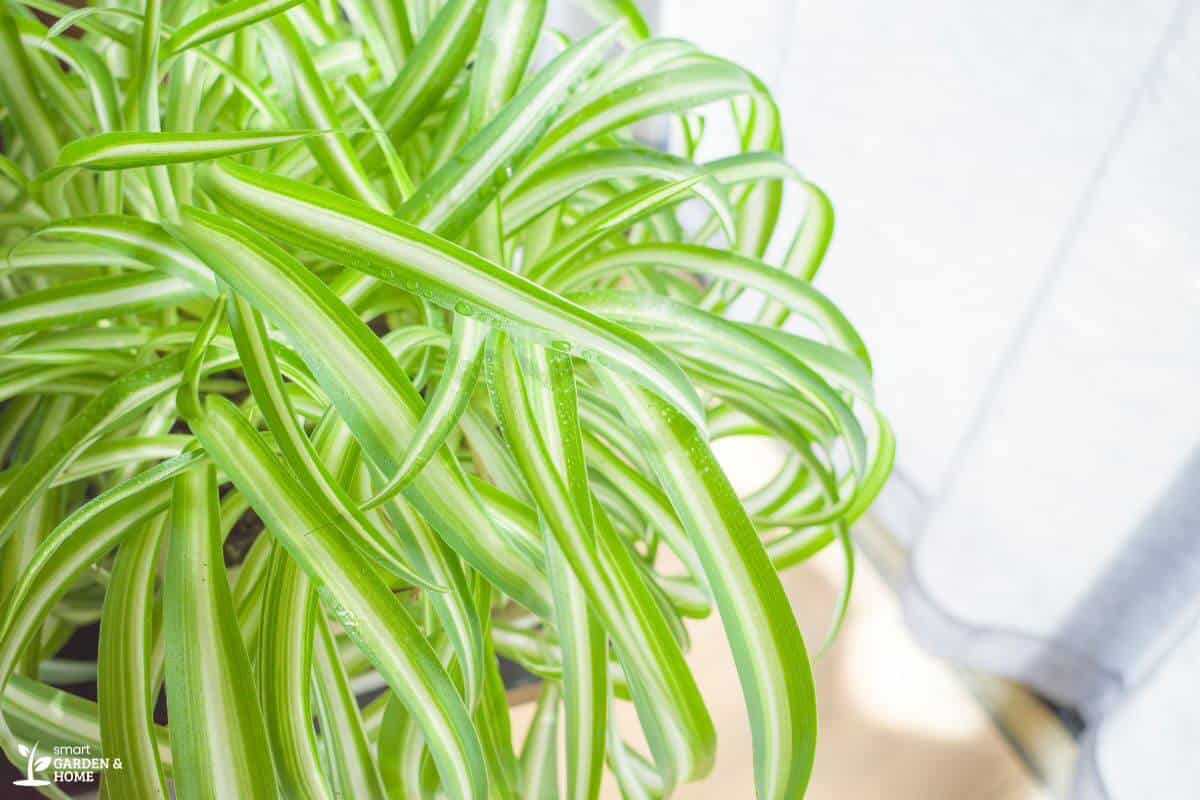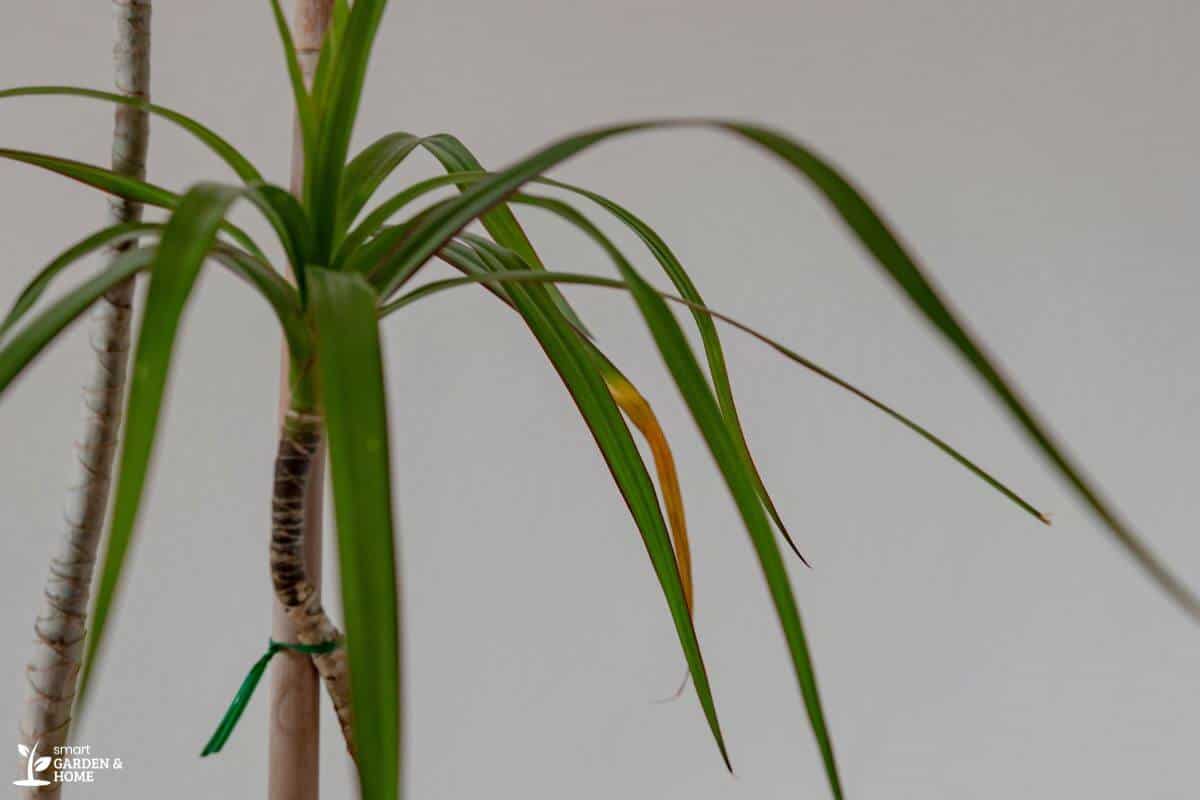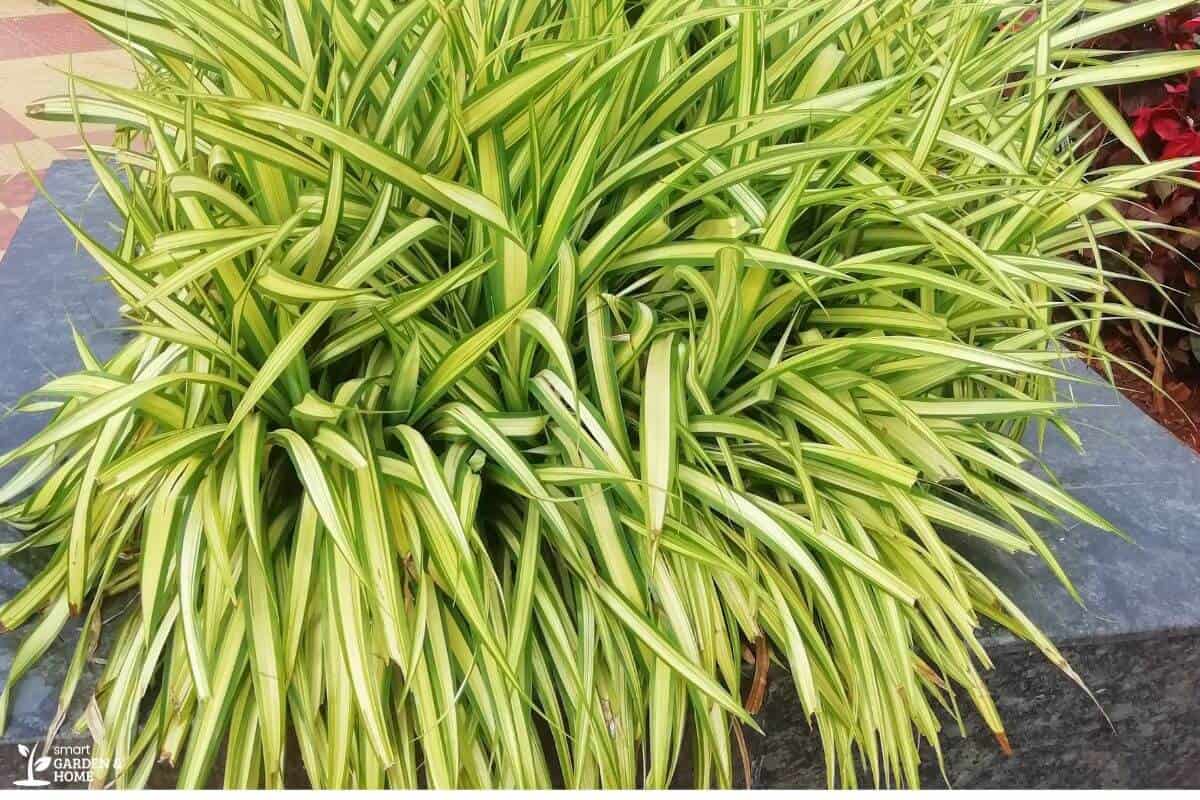Spider plants (Chlorophytum comosum) is also known as spider ivy, ribbon plant, or airplane plant. No course for gardening is needed for first-time plant owners to be able to care for this fast-growing plant as it is very beginner-friendly.
If you are a workaholic but still want to own an indoor plant, give spider plants a chance. Mature plants are hardy and can tolerate fluctuating conditions most of the time.
Regardless, the spider plant is still a plant and it also needs to meet ideal conditions on light level, pot size, moisture level, and type of soil to thrive.
Baby spider plants are not as established and will need to get these things right to survive.
In this article, we will focus on the spider plant’s light requirements. We will also talk about how to understand if your spider plants are getting too much or not enough of it.
- Related Article: Spider Plant Needs
Here’s the quick version: always keep your spider plants in indirect light and avoid the full sun to have a happy plant.
Spider Plant Light Requirements

Spider plants need bright indirect light in order to thrive. They don’t like full sun, so it’s best not to place them where they would receive too much direct light.
If you have a room that has no windows, make sure to purchase artificial lighting to support your plant’s needs. You will easily notice if your spider plant has a good light source because its white stripes will be a lot more visible.
You might be interested in knowing that once the plant is established, it’s more adaptable to different light conditions. It will just need to be watered according to how much light it’s getting to avoid root rot and a dry plant.
How Many Hours of Light Do Spider Plants Need?
Spider plants need about 4 hours of indirect sunlight daily. This is good news if you have other popular houseplants that require more light since you can reserve brighter spots for them.
Can Spider Plants Live in Low Light?

Even though they don’t need too much sunlight, spider plants cannot thrive if it’s too dark. They still need bright light, or they will suffer and won’t be able to bloom or produce offshoots.
A low light environment is not the most ideal for spider plants so although being the hardy plants that they are, they may last for a couple of weeks but eventually, they will grow leggy.
Amp up the light in your room by buying a strong artificial light.
Spider plants will be able to last for a couple of weeks in a non-ideal situation. However, a month or more in the same situation will make them leggy and floppy.
Fortunately, even if your house is too dark you can easily solve the problem by using artificial lighting, which is pretty affordable.
Where Is the Best Place to Put a Spider Plant

The best place to put your spider plants in is a location that receives some light, but not full direct sunlight.
Find a perfect spot with dappled sunlight, ideally next to a north-facing window. This way, the plant will receive weak light that won’t risk burning it.
South-facing windows are not recommended by many since it provides way too much light than what a spider plant needs not unless you have a tree outside to give it some partial shade.
If there is no source of light shade outside and you have a south-facing window, try placing the plant in a shadier spot at the back end of your room. East or west-facing windows are also all right.
During winter months when sunlight is scarce, you can move your plant closer to your window for a brighter spot. Make sure to adjust your watering cycle during this time too and ensure drainage holes in your pot.
What Happens to Spider Plants Without Enough Light?

Once you know the signs, it’s easy to notice if your spider plant isn’t getting enough light.
Once you see any of the symptoms that we have enumerated below, consider moving your plant to a better location. Another option is to install artificial lighting.
- Faded leaves with barely visible or absent white streaks
- Yellow leaves (if it’s the only symptom, it could also be a sign of other problems, such as overwatering and soggy soil, a bug infestation, or a chemical buildup in the soil
- Dropping leaves
- The spider plant doesn’t flower
- The spider plant doesn’t produce offshoots (babies)
Healthy spider plants usually recover quickly but only if you have addressed the issue fast. When they are left for too long in the dark, they could cease to exist.
Learn more about How to Save a Droopy Spider Plant.
What Happens to Spider Plants With Too Much Light?

If your spider plant is exposed to direct sunlight or the light is too intense, it will quickly show it.
Make sure to catch these clues quickly because once most of the foliage has changed color, it would be difficult to reverse and the plant could dry out.
Here are the main symptoms:
- Burnt leaves
- Brown spots on the leaves
- Dull foliage
If the spider plant leaves fade to light green, the plant is most likely getting too much light source, but it could also mean that it hasn’t been watered enough.
If it’s already in a spot where it gets the right amount of indirect light and you have kept the soil moist, it could be a sign of bacterial leaf blight.
When the light conditions have already been addressed and your plant’s leaves are still changing colors, maybe you could also review the water that you are using.
Spider plants are sensitive to tap water’s chemical and salt content so always go for rainwater when it is available or distilled water.
Final Thoughts on Spider Plant Light Requirements
Spider plants are some of the easiest and most attractive plants to grow. They require minimal proper care and even have air-purifying qualities.
It’s important to remember though that just like any other living creature, they have certain needs.
Give it at least 4 hours to soak in indirect sunlight a day. If you are staying in a room with no windows and no access to sunlight, provide a grow light for your plant instead.
If you provide your spider plant with the right amount of natural light and water it regularly, its foliage will remain vibrantly green and it might even produce offshoots and small white flowers.
Give it light misting every once in a while as well because spider plants love humid environments.
Now, it’s time to give your spider plants some love! If this is something that you found informative, wait until you get your hands on these articles that can help you have a thriving spider plant:
- Types of Spider Plants
- Transplant Spider Plant
- Spider Plants and Rats
- Spider Plant Potting Soil
- What Pot for Spider Plant
Sources:


